Syllable Series Part Six: Consonant + le Syllables
Welcome back! This is part six in my six-part syllable series. In this part, we‘ll explore the consonant + le syllable! I am having so much fun sharing this information about syllables with you!

A few quick reminders:
- If you are new to this series, please take some time to read through parts 1-5. They aren’t long, but you’ll see the progression I follow and my reasoning. You can find those posts here.
- To follow along with this series, please download a chart I created on the six syllable types by clicking here. It spells out CLOVER. Each letter in CLOVER stands for a syllable type, but is NOT taught in that order. I am blogging in the order the syllable types should be taught, so just follow along and you’ll see how I do it.
- You will also want to check out my Free Orton-Gillingham Syllable Division Poster.
What Is The Consonant +le Syllable Type?
Word nerd alert! Let’s backtrack a little to learn about the history of consonant +le. Back in the early 14th century, most le words were spelled el. (Battle was batel.) Over time, we reversed it to be spelled with le.
The consonant +le syllable is a syllable where you have a consonant with an le following it. There is a schwa sound that happens in these syllables right before the letter l. So you will hear the vowel sound making a schwa sound of ul. Examples include -ble, -cle, -dle, -fle, and -gle.
Important points about this syllable type:
- Consonant +le will always occur at the END of a word.
- Examples include: -ble, -cle, -dle, fle, -gle, -kle, -ple, -sle, -zle tle (like gentle), and -tle, but the t is silent like castle.
- It usually has three letters, and the last two letters of the three are le.
- The final e is silent.
- The letter before the le will let you know what sound to make. (ap/ple sounds like ap-pul)
- Why do we need the e? Because EVERY syllable has to have a vowel, and the e is fulfilling its role in that purpose. It’s the only syllable type when neither of the first two letters are vowels and you have a silent e after it. You can hear the vowel in all the other syllable types.
How I Teach Consonant +le Syllables
1. Marking and dividing syllables
Many teachers use the count-back three strategy when dividing syllables, which is fine. I still like to go through the process of marking and then dividing. The count-back-three strategy can be used after you’ve marked to confirm that it is where the line of syllable division is found.
IMPORTANT: Your students’ knowledge of open and closed syllables is going to be important here. Here are some mini-posters I created for you to display with some think-aloud prompts. You can print them out here.
2. Counting syllables
I’m going to put this one right out to the masses. I don’t like clapping out syllables. There, I said it. Please, for the love, don’t have your kids clap out a word to find out how many syllables there are in a word. They can’t feel it, and they probably can’t hear it. This is an inefficient strategy for kids, particularly for your struggling readers. If you are an old syllable clapper from way back when, today you will change your ways and use a new strategy.
3. The Chin Trick
This video shows clapping out syllables and using robot speaking to find syllables, but fast forward to about one minute into the video, and you’ll find my favorite part: the chin trick. This is what I want you to start doing with your kids instead.
- Place a hand, flat out, palm side down, under the chin.
- Say a word. (Let’s try apple.)
- Now FEEL how many times your chin drops when you say the word.
Go ahead. Try it. Did you feel your chin drop twice? That makes apple a two-syllable word.
This is a great kinesthetic strategy for counting syllables. We’re keeping things multi-sensory WHENEVER possible, remember? Kids can feel their chin drop as they count and hold up a finger every time their chin drops to count a syllable. It’s been a huge game-changer for me—every kid I have done this with reports it being much easier than clapping out syllables. Please consider using the chin trick instead from now on!
Learn more about syllable division. Watch my video on YouTube, V/CV Syllable Division, and read my blog post, 7 Steps for Teaching C+LE Syllable Division!
Don’t miss these resources to help you teach the consonant + le syllable:
- Consonant le Syllable Worksheets and Activities
- Summer Phonics Activity Task Cards for C+le Review
- Consonant le Syllable Activities for Orton-Gillingham

Resources for Spelling Generalizations
When teaching spelling generalizations, teach each one in isolation, not altogether, and practice it a whole lot. Have children test out the generalization to see if it holds up to each word they encounter.
- Click here for a list of spelling generalizations. What’s nice about this resource is that there is a table with frequency to see how often that spelling occurs in the English language.
- Click here to view my Orton Gillingham materials, which contain spelling generalization mini-posters to display in your classroom or at-home setting.
Multisensory Practice
In keeping with the integrity of Orton-Gillingham, I must remind everyone that one of the reasons why OG is so effective is that it is multi-sensory. So please keep your activities multisensory. This means engaging at least three senses within an activity to build a strong connection in the brain. Aim for visual, auditory, and kinesthetic. A bonus is tactile. Tapping out sounds, sliding plastic counters into Elkonin boxes, tracing in sand, skywriting, and magnetic letters are all ways you can create a multi-sensory learning experience. Just be sure children are vocalizing sounds and letters during all of these activities. They are seeing it, hearing it, touching it, and/or writing it, every time.
- Wondering why multisensory instruction is SO important? Read here.
- Looking for materials to support multisensory instruction? Find them in my store here.
Do you have a fun way to teach the consonant + le syllable type? I‘d love to hear about it in the comments below!
- Read the whole Six Syllable Types Blog series.
- Read Helpful Strategies for Syllable Division for more syllable practice tips!
- For teaching materials to teach the syllable types, look here!
Are you looking for a list of words to use in your Orton-Gillingham lessons? Word List Builder has got you covered!
Save time searching for words to use in your lessons! Create customized and meaningful review, build your folder of words, create templates and games, and much more in Word List Builder.


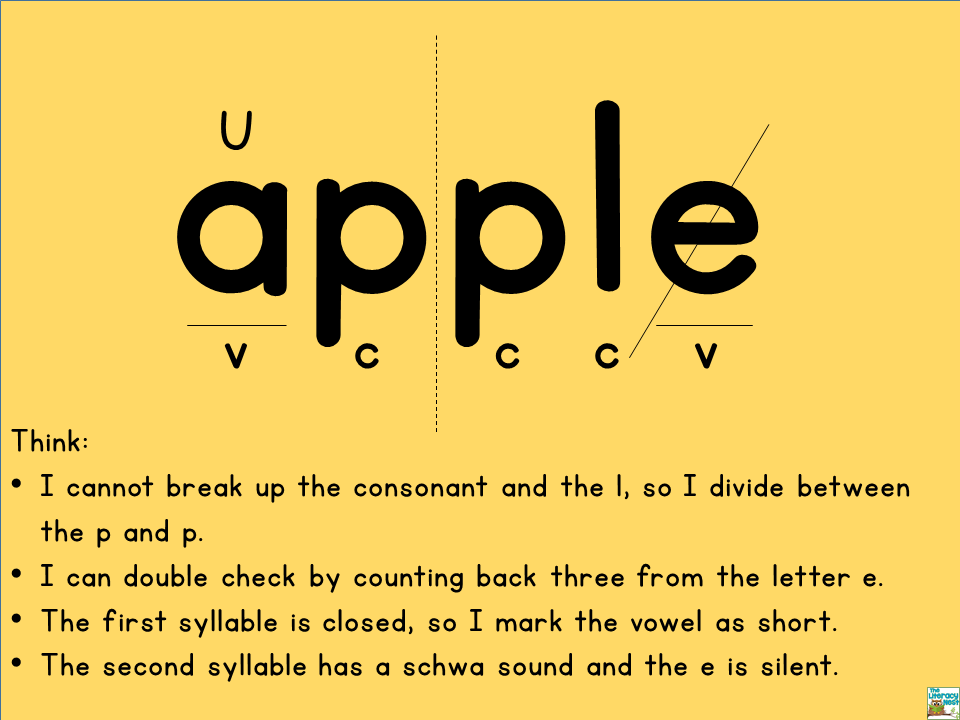

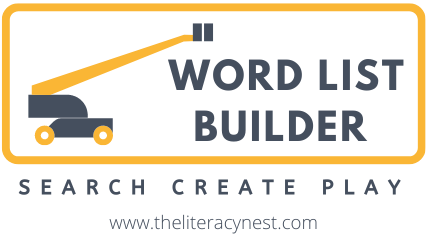
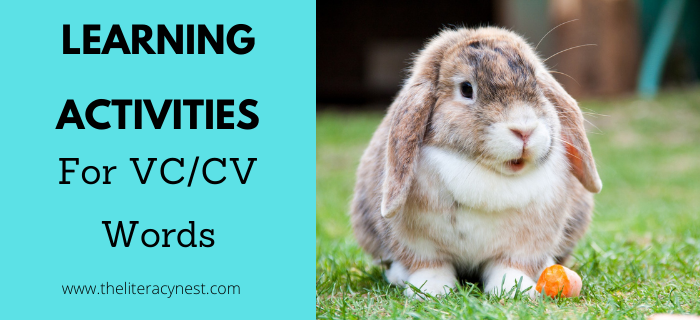

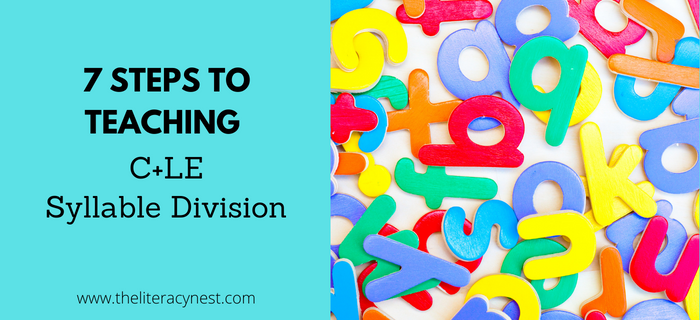
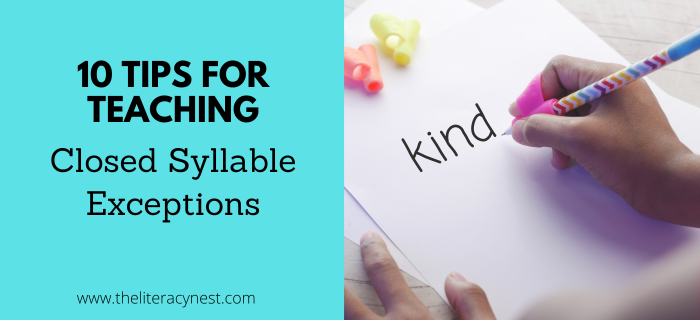
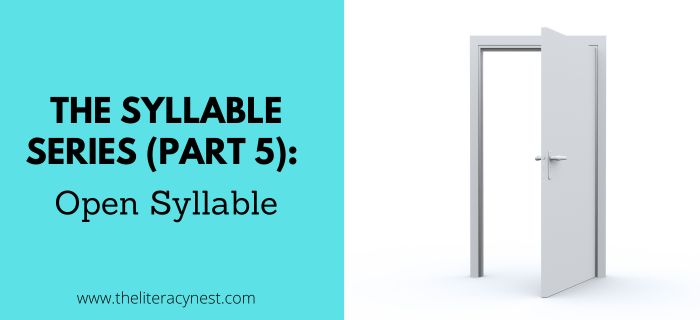
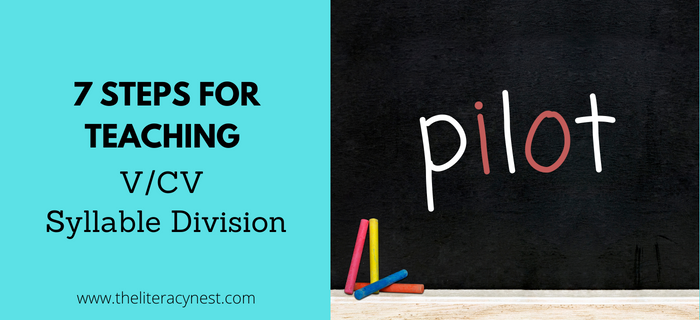
Hi Emily, First of all: Congrats on your baby news. I hope the morning sickness goes away REALLY soon.
I've been enjoying your summer Syllable series. So much detailed information! You should be teaching a course on it. (In your spare time -lol).
I hope that you will be starting up Mentor Mondays again in the fall. I really enjoy the great book-related activities and used lots of them in my classroom.
Take care.
Always Primary
This comment has been removed by the author.
I was just wondering about training online using OG. I love your site and the information that I've gotten. Thanks!